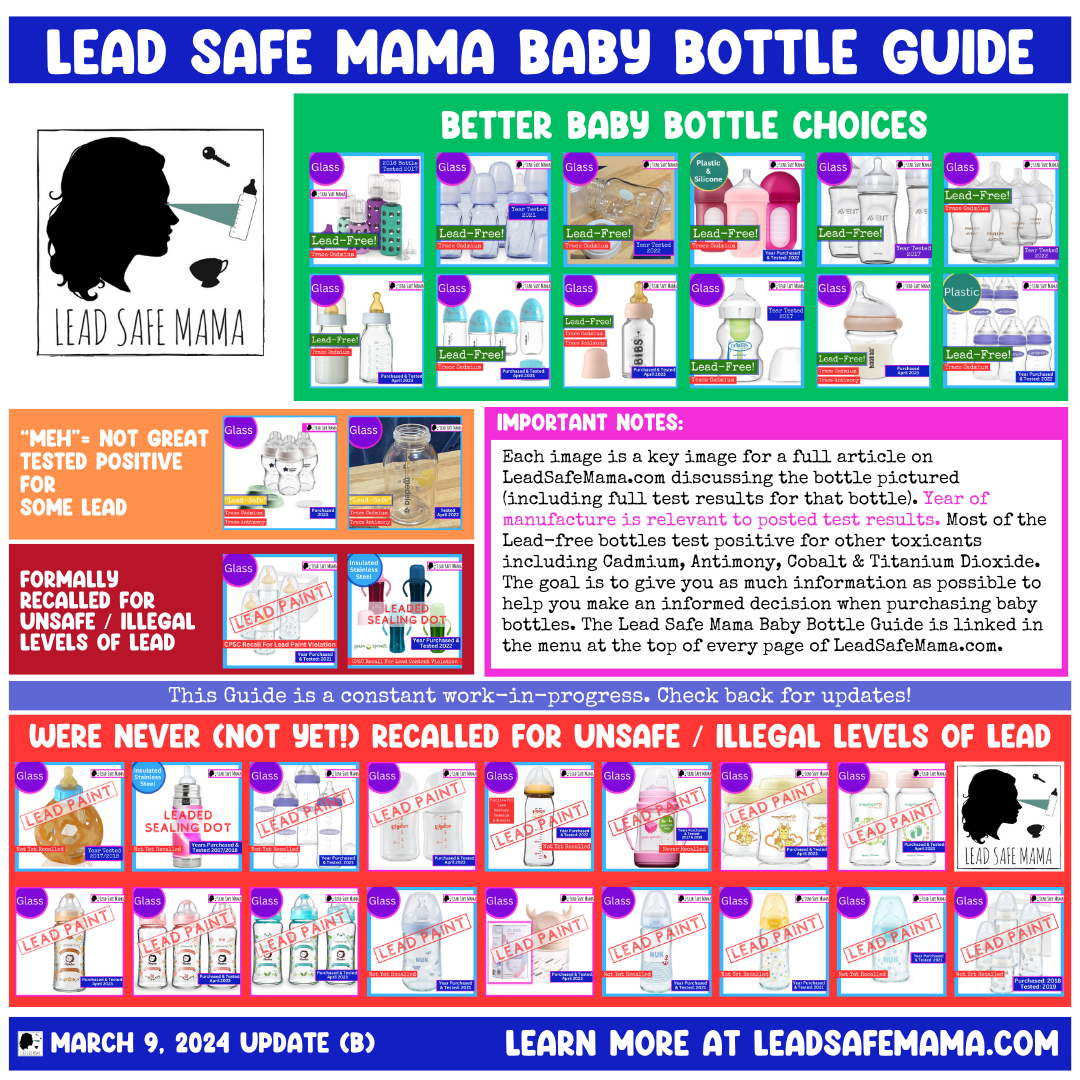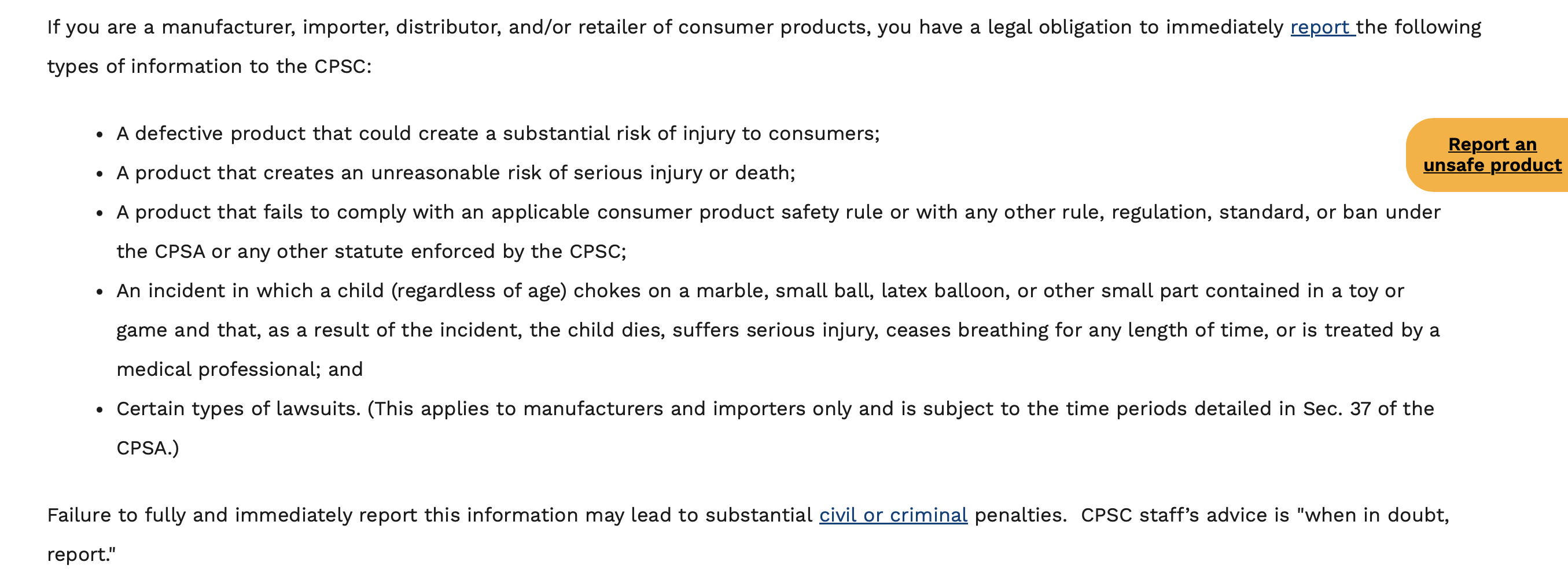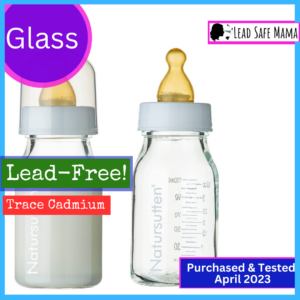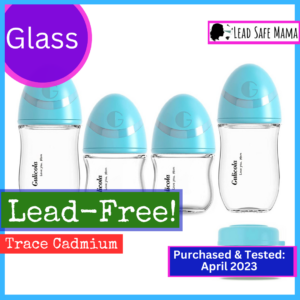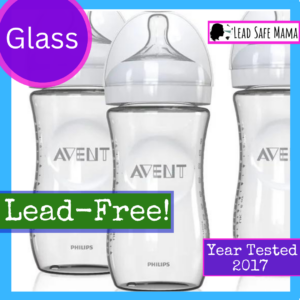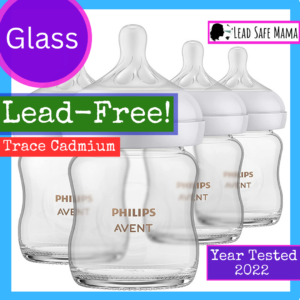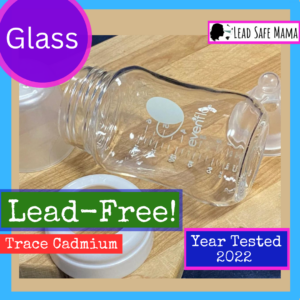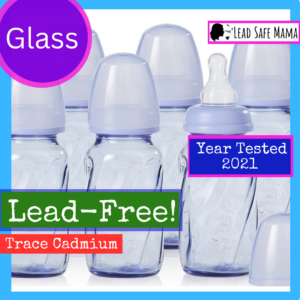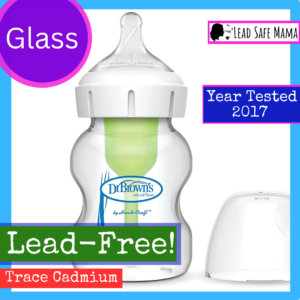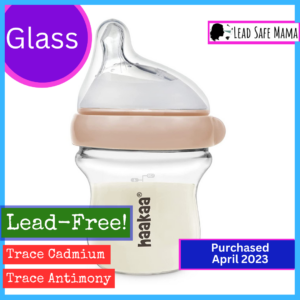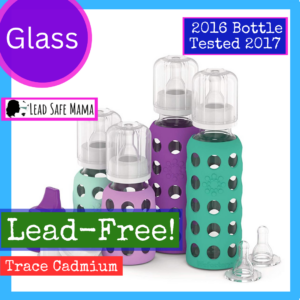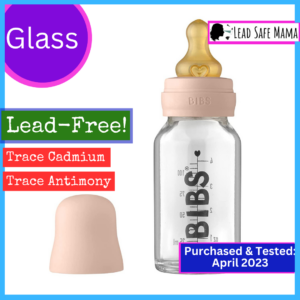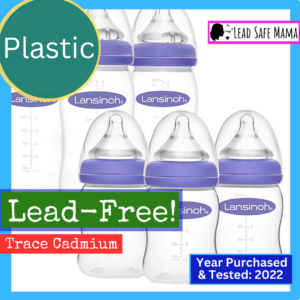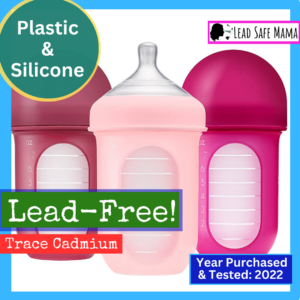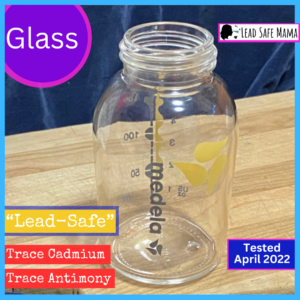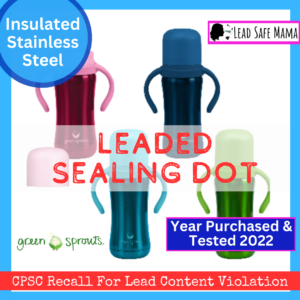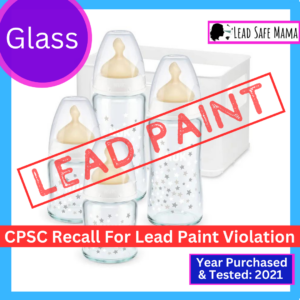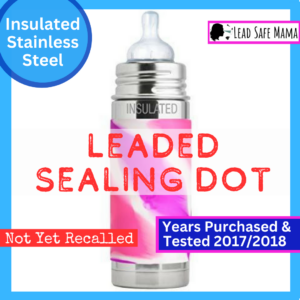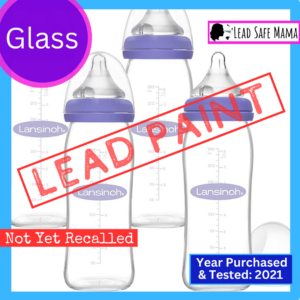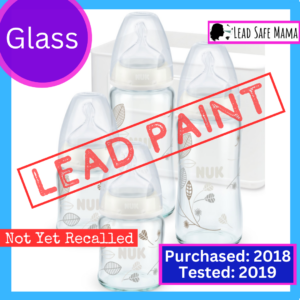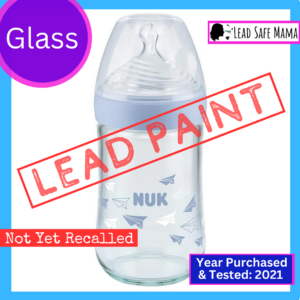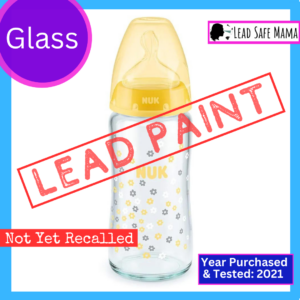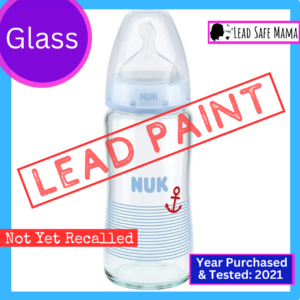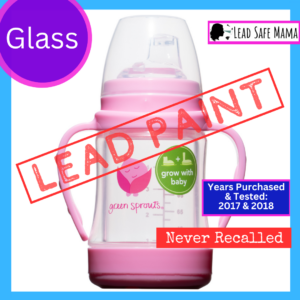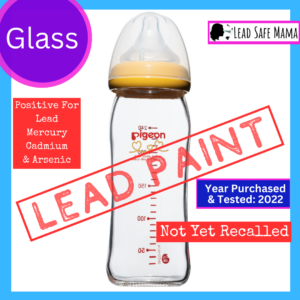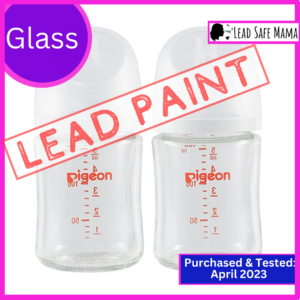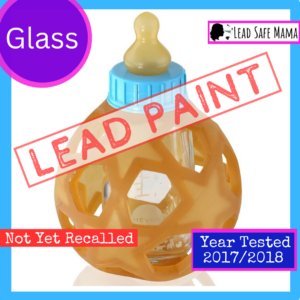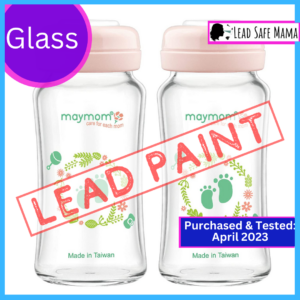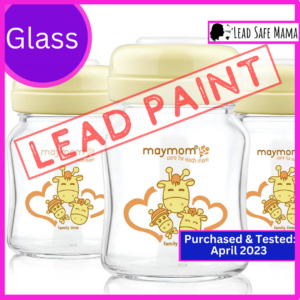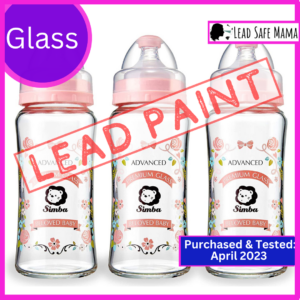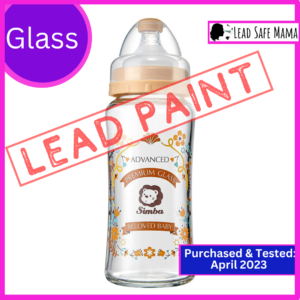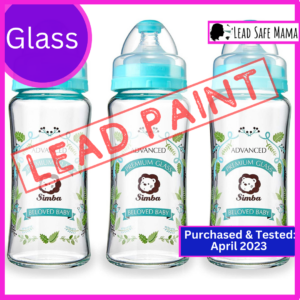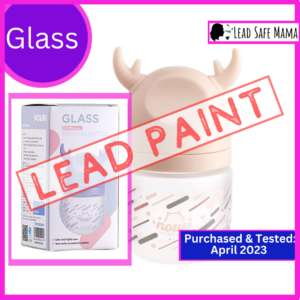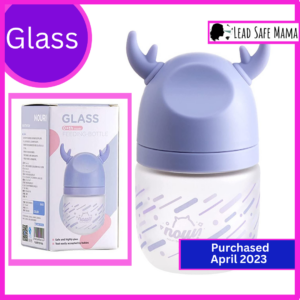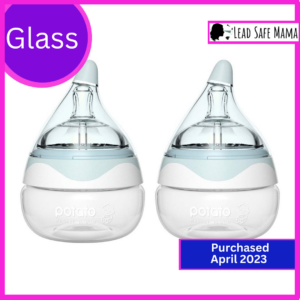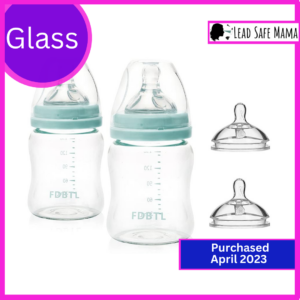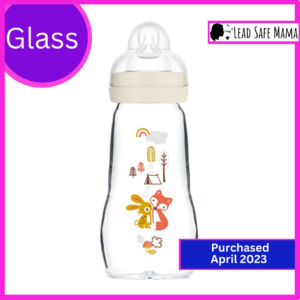Lead Safe Mama Baby Bottle Guide
For those new to the Lead Safe Mama website:
Tamara Rubin is a multiple-federal-award-winning independent advocate for childhood Lead poisoning prevention and consumer goods safety, and a documentary filmmaker. She is also a mother of Lead-poisoned children (two of her four sons were acutely Lead-poisoned in 2005).
- Tamara owns and runs Lead Safe Mama, LLC — a unique community collaborative woman-owned small business for childhood Lead poisoning prevention and consumer goods safety.
- Since 2009, Tamara has been conducting XRF testing (a scientific testing method) using the exact instrumentation employed by the U.S. Consumer Product Safety Commission to test consumer goods for toxicants (specifically heavy metals — including Lead, Cadmium, Mercury, Antimony, and Arsenic).
- Since July of 2022, the work of Lead Safe Mama, LLC has been responsible for 5 product recalls (FDA and CPSC).
- All test results reported on this website are science-based, accurate, and replicable.
- Items that Lead Safe Mama, LLC reports on are tested multiple times to confirm the results published (for each component tested).
- Recent notable press… There has been too much to mention already in 2024! Please check out our press page to see some of the amazing coverage of our work so far this year!
This is an ad-free article.
Advertising and affiliate income help us cover the costs of the work we do here (independent consumer goods testing and childhood Lead-poisoning prevention advocacy). We have removed ads from most of our more widely-read articles (like this one!) to make them easier for you to read. In addition to supporting this work by starting any shopping you might be doing with clicks on our affiliate links, if you would like to support our independent consumer goods testing and childhood Lead-poisoning prevention advocacy work by making a contribution (which will also help us keep our more widely-read articles ad-free), click here. Thank you!
Published: April 23, 2023
Updated: March 09, 2024
This page is only for baby bottles. A separate overview page will be published soon for other baby-feeding products, including sippy cups and baby food storage. In the meantime you may want to check out the following links:
- Our Water Bottle / Sippy Cup overview article
- The “Sippy Cups” category of articles here on LeadSafeMama.com
- The “Baby Food Storage” category of articles
- Our Lead-Free Baby Food Storage recommendations
Before you read this guide you may want to familiarize yourself with two key points (the two links in blue below) regarding the reasons that Lead-contaminated baby bottles are problematic and potentially harmful to children.
1.) “Why it’s a problem if the Lead is on the OUTSIDE of the bottle?”
2.) “Will this really poison a child?”
Section #1) Background for the Lead Safe Mama Baby Bottle Guide
Please Scroll Down to Find Your Baby Bottle
Each of the images of baby bottles below is a clickable “button,“ which accesses a link that will take you to a specific article, or group of articles, about the bottle(s) pictured. If a “button” is not yet active, that means the article for the particular bottle(s) has not yet been written but is pending — so please check back again soon!
- We (Tamara Rubin / Lead Safe Mama, LLC) have been testing baby bottles for Lead using XRF technology since 2009.
- Each of the bottles shown below on the Lead Safe Mama Baby Bottle Guide has been tested for toxicants (specifically poisonous heavy metals including: Lead, Cadmium, Mercury, Arsenic, and Antimony) in all components.
- Baby bottle components that we test for toxicants include:
- the main element of the bottle (painted / decorated areas and unpainted areas are each tested separately),
- the bottle nipple,
- the bottle collar (the component that holds the nipple on),
- and the cap that goes over the nipple.
- Full test results for each bottle are normally noted in detail in each linked article (along with an assessment of the level of concern for the particular bottle given the toxicants found).
- If the linked article does not include full test results for the item pictured (and only includes the Lead level or only includes the toxicant levels for the main component of the bottle), this is typically because it is an older article — written before we started doing more-detailed assessments of the products we test and report on. We are working on updating those articles with more current testing as time permits.
- Given Lead Safe Mama, LLC does not have the capacity (yet) to test every single baby bottle during each year of production. as a general rule of thumb the two guidelines are useful:
- SAFE BOTTLES: If we share about a bottle in our guide and that baby bottle is noted as being Lead-free / negative for concerning levels of toxicants, it is reasonable to assume that all years of production for that same brand and type of bottle (made of the same materials – for example glass bottles or plastic bottles) will likely test similarly.
- This does not hold true for bottles from the same brand made of different materials.
- A good example is Lansinoh: their glass bottles are painted with Lead-paint and their plastic bottles are Lead-free.
- UNSAFE BOTTLES: If we share about a particular bottle in our guide and that bottle is contaminated with Lead, it is reasonable (and safer) to assume (in the absence of additional testing demonstrating otherwise) that all years of production for that same brand and design of bottle (made of the same material – for example glass) would likely test similarly. It is also reasonable to assume that similar bottles from the same brand (with different designs, but made of the same materials) will likely test similarly.
- A good example of this is the SIX glass NUK brand bottles that all tested positive for unsafe levels of Lead in the painted markings and decorations even though the painted markings were different (unfortunately only one of those bottles was recalled when all six should have been).
- Exceptions to this are noted in any articles where it is relevant. For example NUK’s decorative markings were painted with Lead paint and they have now -recently, confirmed in 2024 (since our testing resulted in a highly visible public recall of their Lead-painted baby bottles in 2022) switched to Lead-free painted markings on their decorated glass bottles (we have some we purchased in German that we will be reporting on shortly).
- SAFE BOTTLES: If we share about a bottle in our guide and that baby bottle is noted as being Lead-free / negative for concerning levels of toxicants, it is reasonable to assume that all years of production for that same brand and type of bottle (made of the same materials – for example glass bottles or plastic bottles) will likely test similarly.
- Please Note: The Lead-contamination concern in baby bottles does not impact ANY modern/ recently manufactured plastic bottles. Said another way: MODERN PLASTIC BOTTLES never test positive for Lead in any components. This is true for all brands of modern plastic bottles.
If your child has been using any of the bottles noted as being painted with Lead paint (or otherwise Lead-contaminated), and your child has not had a recent Blood Lead Level (BLL) test, we encourage you to ask your pediatrician to order a current BLL test (especially if your child has not been tested within the last six months, or if your child is just about to start crawling). You can read more about BLL testing at this link (including questions you might want to ask your doctor before you get your child tested).
Painted glass baby bottles cannot be meaningfully/ reliably tested in any way by consumers — while some painted glass baby bottles may test positive with a home test kit, most reactive-agent home Lead-test kits (including all of various chemical formulations available) simply do not have the level of sensitivity and accuracy required for testing these types of products. As an independent third party (with no corporate influence or affiliation related to these products), Lead Safe Mama, LLC tests these products for you (and makes the information freely available to the public) as a public service because you cannot test them yourself at home. You can read more about why we do this testing and reporting at this link and you can read more about the unique Lead Safe Mama, LLC business model at this link.
Section #2) Some Lead-Free Baby Bottle Choices (Feb 2024 pricing on Amazon is noted)
Since many families simply want to know which baby bottle brands are safest (from a Lead-perspective), a short-list of bottles that consistently test negative for Lead and are available on Amazon today is below. Some key points:
- While we understand some families may need plastic or silicone products (for various reasons, including daycares that may not allow glass bottles), whenever possible we recommend using glass baby bottles.
- We also recommend using natural rubber baby bottle nipples whenever possible (unless your child has a medical condition that prevents the use of natural rubber nipples).
- Bibs and Natursatten are two brands that have Lead-free bottles with natural rubber nipples.
- A fed baby is best. If your baby will not take a natural rubber nipple. a silicone nipple is a reasonable alternative. Given the prevalence of traces of Cadmium found in most brands and most types of silicone products – if you are going to feed your baby with a silicone nipple, we recommend limiting the use of other types of silicone products – especially any silicone products for food preparation or serving (in order to limit overall / aggregate exposure to trace levels of Cadmium in your child’s life). This concern is discussed in greater detail on this article – link.
Lead-Free choices from Avent
Glass: $39.95 for an 8oz set of 4: https://amzn.to/49l7vt1
Glass: $39.95 for an 4oz set of 4: https://amzn.to/49NlmrT
Plastic: $26.65 for a 9 oz set of 4: https://amzn.to/3Ie1fHe
–
Lead-free choices from LifeFactory
Glass: $14.99, single 4 oz: https://amzn.to/3T51z1s
Glass: $26.93, two-pack, 4 oz: https://amzn.to/49KlfNo
Glass: $29.60, two-pack, 9 oz: https://amzn.to/42Rcsr6
–
Lead-free choices from EvenFlo
Glass: $16.27, 6-pack, 8 oz: https://amzn.to/48nRocF
Plastic: $29.99, 6-pack, 9 oz: https://amzn.to/3wqVSlw
–
Lead-free choices from Dr. Brown
Glass: $18.95, 3-pack, 5 oz: https://amzn.to/3PfJnQz
Glass: $18.95, 3-pack, 9 oz: https://amzn.to/3OSeX6K
–
Lead-free choices from Haakaa
Glass: $19.90, single bottle, 4.2 oz: https://amzn.to/3I50j8l
Section #3) Important Points of Consideration
- Glass baby bottles typically stay in circulation/are in use for 5 to 10 years or longer (especially in families with multiple children, and especially with bottles designed and marketed to “grow with your child“).
- Because of the above point, we (Lead Safe Mama, LLC) consider baby bottles to be “current” products if they were manufactured and/or sold as new products in the past 10 years.
- It is our stand that Lead-contaminated bottles made and sold between 5 and 10 years ago should be subject to the same public, government (CPSC) coordinated recalls, as newly-manufactured Lead-contaminated bottles manufactured in the past 5 years — as many of these older bottles are still in use in homes around the United States (and the world).
- Legislation implemented in 2008 mandating the manufacturing of Lead-free children’s products (the Consumer Product Safety Improvement Act of 2008, the “CPSIA”) set limits for Lead content (in both painted coatings and substrates) that became fully-enforceable regulatory limits across all types of children’s products by 2011.
- The Lead-limit set for paint and coatings of items intended for use by children is 90 ppm Lead. Any item intended for use by children that tests positive for Lead levels above 90 ppm in the paint or coating is in violation of the CPSIA.
- The Lead-limit set for substrates (base materials/components) of items intended for use by children is 100 ppm Lead. Any item intended for use by children with one or more component that tests positive for Lead levels above 100 ppm in the substrate is also a violation of the CPSIA.
- Per the guidelines of the 2008 regulations, the CPSC should formally and publicly announce a recall for any and all Lead-contaminated children’s products made after 2011, even if the Lead-contaminated version of that product is “no longer being sold” today (by the manufacturer directly or by third-party sellers).
- The companies in question should also be appropriately fined — with relevant criminal penalties per the CPSIA (image below) if it can be clearly demonstrated that the company failed to take immediate appropriate action (including notifying the CPSC of the lack of regulatory compliance, notifying their customer base and issuing a public voluntary recall statement) as soon as they learned their children’s product was in violation of the CPSIA, either painted with high-Lead paint or contaminated with high levels of Lead in the substrate.
- Please carefully look at the information on each of the button images and note the date of testing and date of publication in the image-linked articles below, to understand when products were tested and therefore which version of products (manufactured in which years) were found to be either safe or test positive for unsafe levels of Lead.
Duty to Report/Criminal Penalties Language from the CPSC
The image below is linked to the CPSC’s page
Section #4) Brands you may Want to Avoid:
Baby Bottle (and baby-feeding product) companies we recommend never buying bottles from (primarily for ethical/political considerations), whether or not they happen to still have Lead-contaminated/Lead-painted products on the market today (a recommendation based primarily on the fact that each of the named companies below is producing Lead-contaminated products currently, or has done so in the recent past, AND has refused to issue an immediate and comprehensive recall for one or more of their Lead-contaminated products after being made aware of the concern!):
- Pura Kiki (Stainless)
- Green Sprouts (Stainless and Glass)
- Nuk (Glass)
- Hevea (Glass)
- Tabor Place (Glass)
- Lansinoh (Glass)
- Pigeon (Glass)
- Nouri (Glass)
- Maymom (Glass)
- Simba (Glass)
- Cupkin (Stainless — Sippy Cup)
- Wee Sprout (Glass — Baby Food Storage)
- Crocodile Creek (Stainless — Children’s Water Bottles)
- Paulie Jar (Stainless — Baby Cup)
- Jervis & George (Glass — Baby Food Storage & Children’s Cups)
- Zak! (Stainless & Ceramic — Children’s Cups)
Section #5) Baby Bottles Tested And Reported On by Lead Safe Mama, LLC
Images in this section are linked buttons.
Click any image below to read the full article about the product pictured.
Section #5.a.) Better Baby Bottle Choices
 •
•  •
•  •
•  •
•  •
•  •
•  •
•  •
•  •
•  •
•  •
• 
Section #5.b.) Meh = “Not Great”
Bottles That Tested Positive for Some Lead (but “legally” within safe range)
 •
• 
Section #5.c.) Baby Bottles That Have Been Formally Recalled For Unsafe Levels Of Lead
(In response to efforts of the Lead Safe Mama advocacy community)
 •
• 
Section #5.d.) Lead-Contaminated Bottles That Lead Safe Mama, LLC Has Reported To The CPSC But That Have Not Yet Been Recalled
 •
•  •
•  •
•  •
•  •
•  •
• 
Section #5.e.) More Bottles With ILLEGAL / UNSAFE LEVELS OF LEAD That Have Not Yet Been Recalled
 •
•  •
•  •
•  •
•  •
•  •
•  •
•  •
• 
Section #5.f.) Articles to be Published Shortly
~ End ~










